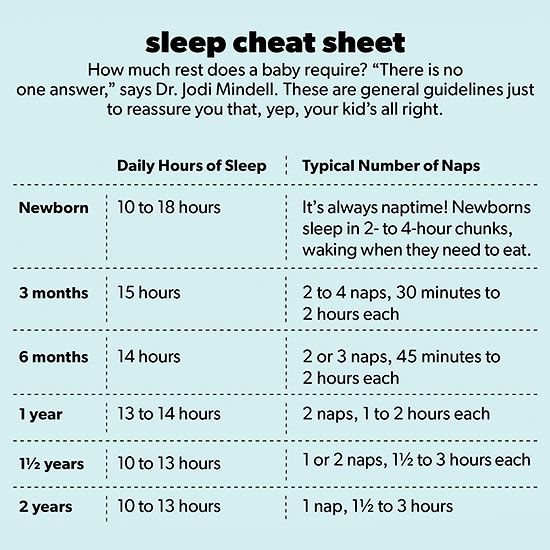Ultimate Guide to Sleep Training Your Baby: Happy Zzzs Ahead!
Hello, wonderful parents! Are you dreaming of a night where the stars twinkle, the crickets hum, and, most importantly, your little one sleeps peacefully through the night? You’ve come to the right place! This Ultimate Guide to Sleep Training Your Baby is your new bedtime buddy, designed to help your bundle of joy learn to snooze independently and ensure sweet dreams for the whole family.
What is Sleep Training?
At its core, sleep training is about teaching your baby to fall asleep without needing to be rocked, fed, or cuddled to slumberland. It’s about establishing a healthy sleep routine that benefits your baby’s growth and development. The process can involve a variety of techniques—it’s not one-size-fits-all! But don’t worry, we’ll walk you through the steps to find the best fit for your family.
Knowing When It’s Time to Start
Before we dive into the methods, let’s first talk timing. Most experts agree that the ideal time to start sleep training is between 4 and 6 months of age. Why? Because by then, your baby’s circadian rhythm starts to mature, and they’re physiologically ready to sleep for longer stretches at night. It’s also a golden period before too many sleep habits have set in.
Setting the Stage for a Successful Sleep Training
Before you start, it’s essential to set the stage. And we’re not just talking about a comfy crib (though that’s important too!). Here are some top tips to create an environment conducive to sleep:
- Consistent Sleep Schedule: Babies thrive on routine, so a regular bedtime is key. Determine a time that works for your family’s rhythm and try to stick to it every night.
- Develop a Bedtime Routine: Signal to your baby that it’s time to wind down. This can include bathing, reading a book, and cuddling before it’s time to hit the pillow.
- Optimize the Sleep Environment: Make sure the room is dark, quiet, and cool. Invest in blackout curtains and a white noise machine if necessary. These elements signal to your baby that it’s time to sleep, and not play or feed.
- Watch for Sleep Cues: Keep an eye out for signs of sleepiness, such as rubbing eyes, yawning, or becoming fussy. These cues are your baby telling you they’re ready for bed.
Choosing a Sleep Training Method
Now, let’s get to the heart of the matter—the sleep training methods. We’ll cover the ones that parents have found the most success with:
- The Ferber Method: Also known as graduated extinction, this method involves putting your baby to bed while they’re still awake and allowing some crying before you comfort them.
- The No-Tears Approach: This gentle method focuses on a slower approach, responding to your baby’s cues, and easing them into learning to sleep on their own.
- The Chair Method: In this method, you’ll sit in a chair near your baby as they fall asleep, moving the chair further away over time until your presence is no longer needed.
- Extinction Sleep Training: Also known as the cry-it-out method, you say goodnight and don’t return until morning. It’s a bit tough but can be effective for some families.
We understand that even considering these options can stir up emotions—after all, no one likes to hear their baby cry. But rest assured, sleep training doesn’t equate to neglect. It’s about equipping your child with the skills to self-soothe and sleep soundly.
Remember, the right approach is the one that resonates with your parenting style and your baby’s needs. Be patient, consistent, and loving as you embark on this journey. The path to nocturnal bliss may have a few bumps, but with a sprinkle of determination and a dollop of guidance, you’ll both be on your way to dreamland before you know it.
In the next section of our guide, we’ll take a deeper dive into each sleep training method, providing step-by-step instructions and pro tips to navigate the challenges you may face. Whether you’re a first-time parent or a sleep-deprived veteran, let’s march confidently towards a future of serene nights and joyful mornings!
Stay tuned, because a well-rested family is a happy family, and we’re committed to helping you achieve exactly that. Sweet dreams await!

5 Essential Things Parents Should Know Before Sleep Training
Embarking on the sleep training adventure is a significant step for both you and your little dreamer. To ensure that both you and your baby are ready for this journey, keep these five essential things in mind:
- Health Check: Make sure your baby is in good health before starting sleep training. You don’t want to begin the process only to find out that teething pains or a cold are the culprits of sleep disturbances.
- Emotional Readiness: Sleep training can be emotionally taxing for parents. Be sure you’re prepared for a few tough nights. It’s okay to feel a mix of emotions, but remember why you’re doing this—to help everyone get a better night’s sleep.
- Understanding of Sleep Needs: Familiarize yourself with how much sleep babies need at various stages. Newborns have different sleep patterns compared to older babies, which will impact how you approach sleep training.
- Clear Schedule: Pick a time when your household can maintain a regular routine for a while. Times of travel, visitors, or significant changes (like moving house) might not be ideal to start sleep training, as consistency is key.
- Partner Involvement: If you’re doing this with a partner, ensure you’re on the same page. Consistency in approach and responses to your baby during the night is essential for sleep training success.
With these preparatory steps in mind, you’ll be on firmer footing as you begin the sleep training process. Awareness and preparation can transform what might seem like a daunting challenge into a more manageable and successful experience.
Deep Dive: A Closer Look at Sleep Training Techniques
In our forthcoming sections, we’ll dissect each popular sleep training method, offering detailed insights and practical tips to help you and your baby navigate the world of sleep training with confidence. We’ll lay out what to expect, how to handle setbacks, and how to celebrate the wins—because each step forward is a victory in the world of baby Zzzs.
Going beyond the basics, we’ll also explore how to tailor sleep training approaches to suit different temperaments and family dynamics. We’ll share expert advice on fine-tuning techniques for your unique little sleeper because, just like us, every baby’s path to dreamland is a bit different.
And let’s not forget you, the superheroes without capes, doing all the behind-the-scenes work to help your baby get the rest they need. Alongside sleep training strategies, we’ll include self-care tips for the caregivers. Because let’s be honest, a well-rested parent is a sleep trainer’s most invaluable asset.
Be assured that this is a judgment-free zone. Whether you’re exploring the Ferber method, debating the chair method’s merits, or considering a customized blend of techniques, this guide is here to support you every step of the way.
By the end, not only will you have a repertoire of sleep training knowledge, but you’ll also have a sense of empowerment—as you’ve guided your little one to independent sleep. Now, let’s pave the way for those happy Zzzs together!
Remember, our guide is a comprehensive resource, and we encourage you to read through each section, ponder the insights, and then embark on this sleep training expedition with optimism and love. The nights of blissful sleep are just beyond the horizon—let’s reach them with joy and gentle patience!
Get ready to turn the page on sleepless nights and embrace a future filled with restful slumbers. Not only for your baby, but for you too. After all, sleep is a beautiful thing—especially when everyone gets their fair share.
So, cozy up with this guide, and let’s journey toward restful nights and energetic mornings—one sleep training step at a time. Shake off any doubts; you’re about to become a sleep training aficionado, ready to reclaim the night and greet each new day with a well-rested smile!
See more great Things to Do with Kids in New Zealand here. For more information see here
Disclaimer
The articles available via our website provide general information only and we strongly urge readers to exercise caution and conduct their own thorough research and fact-checking. The information presented should not be taken as absolute truth, and, to the maximum extent permitted by law, we will not be held liable for any inaccuracies or errors in the content. It is essential for individuals to independently verify and validate the information before making any decisions or taking any actions based on the articles.




